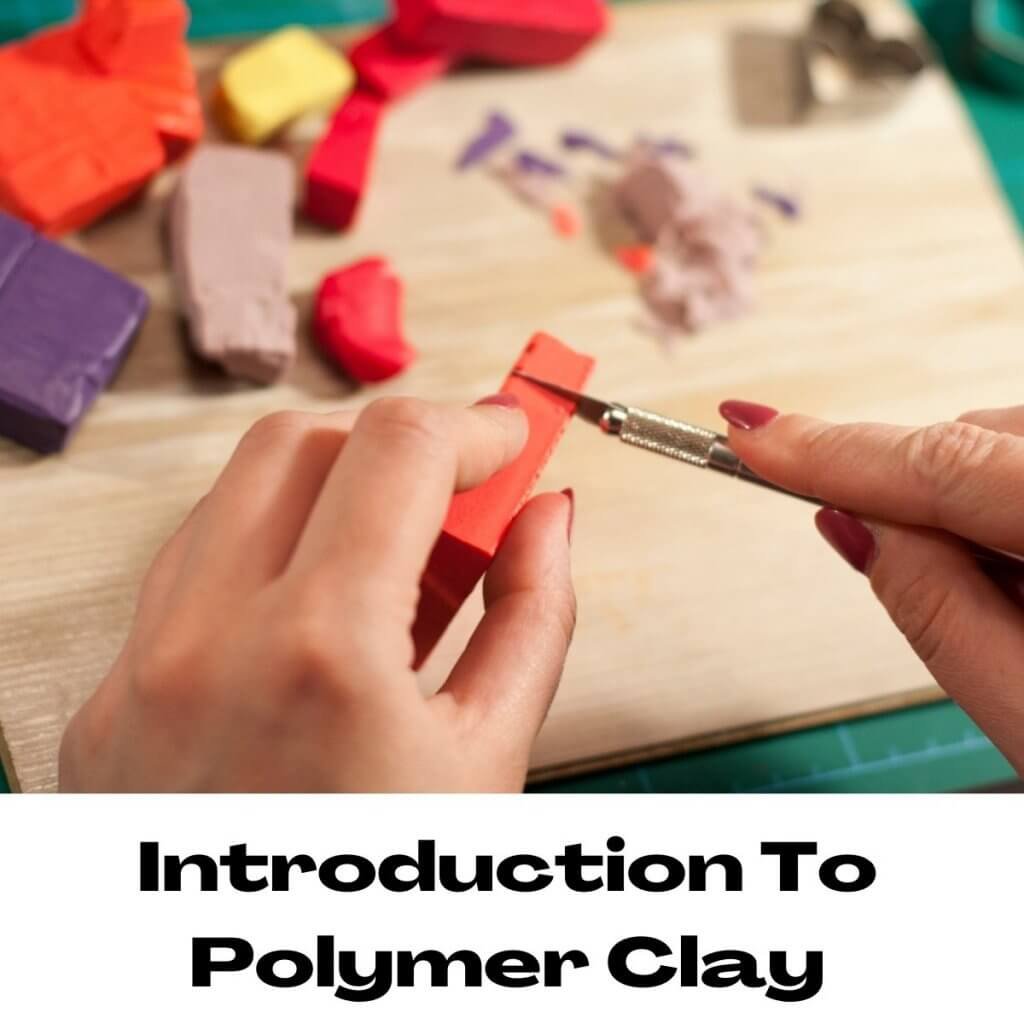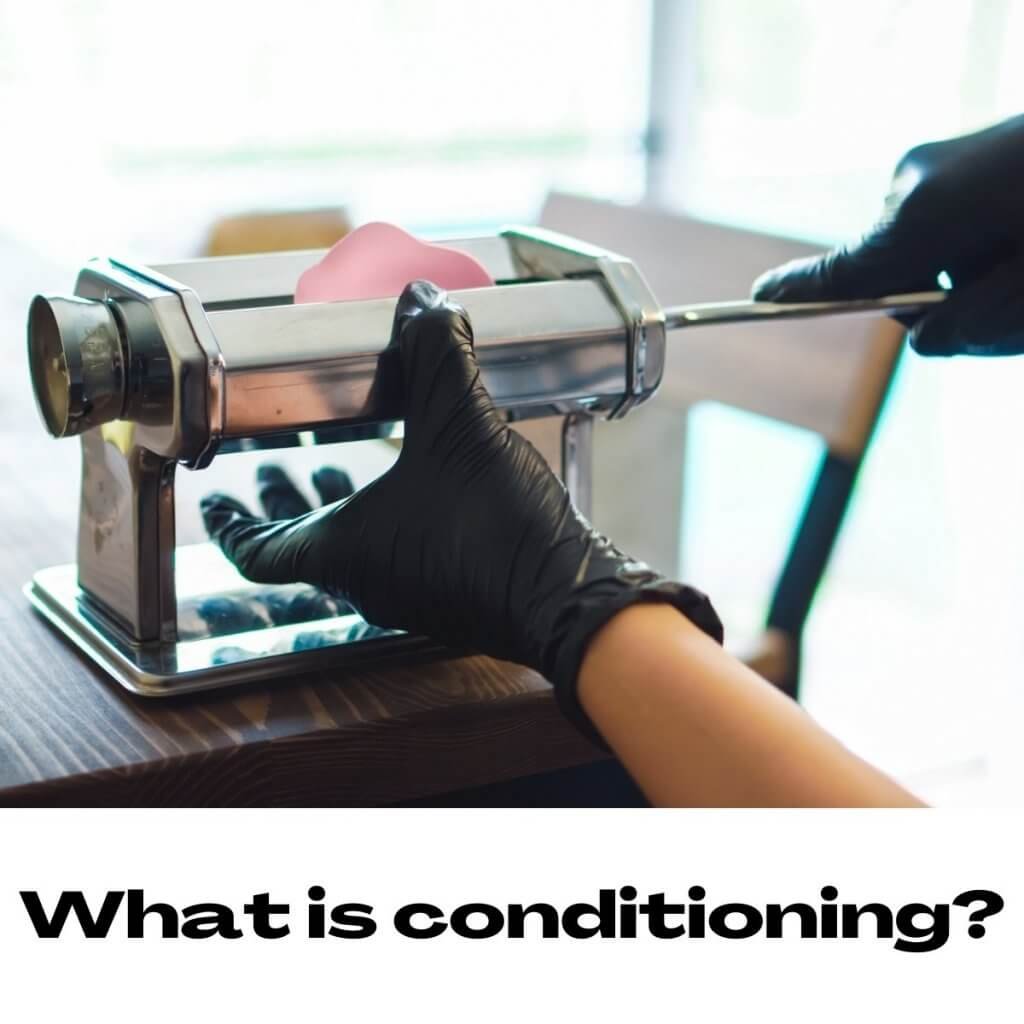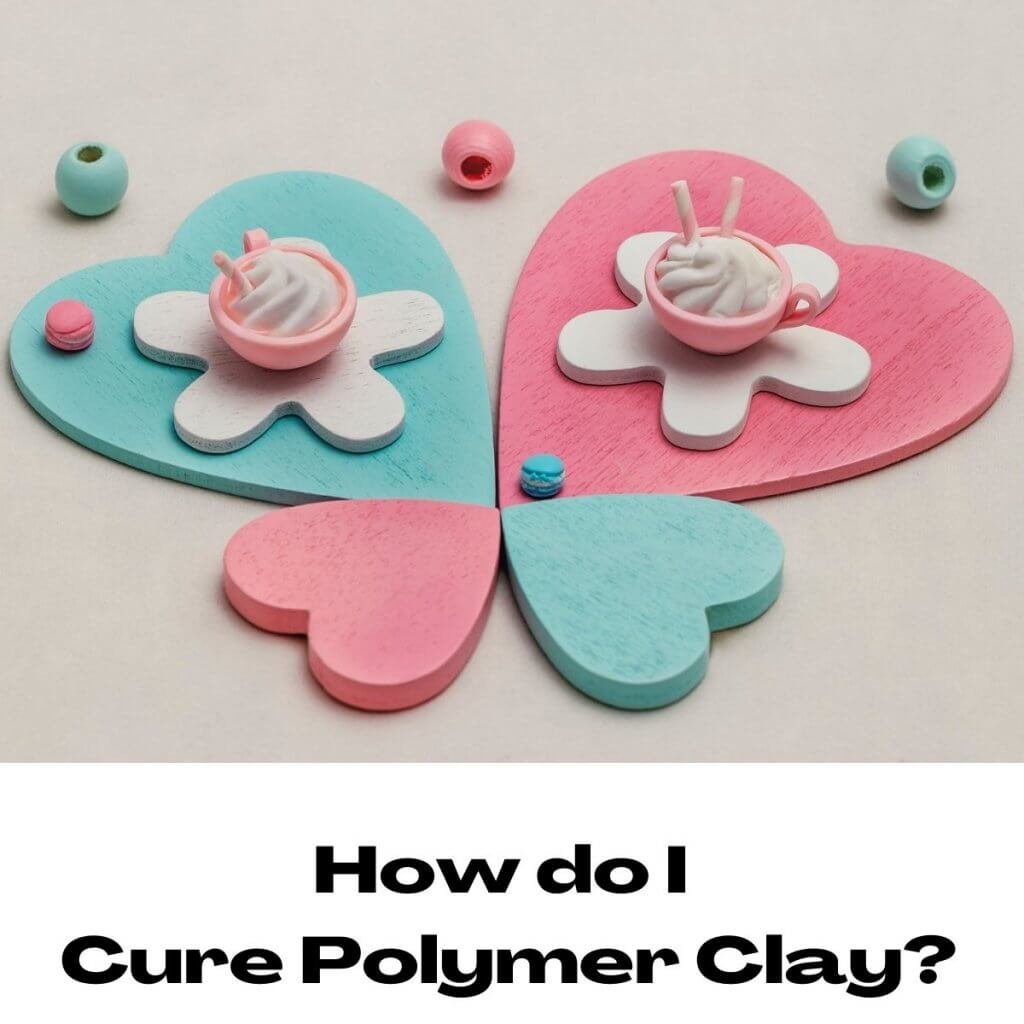This article will introduce you to a potential new hobby and is a beginner’s guide to Polymer Clay. You might think that polymer clay is really more for kids. You’re wrong.
You might even think that there’s not much you can do with polymer clay. You’re wrong again!
While it’s true that I chose to explore polymer clay as a hobby this month because I was looking for an activity to enjoy with my nieces and nephews, I realized that these colorful pieces of clay can actually lead to so much more.
You can create various items out of polymer clay – jewelry, miniature figurines, picture frames. Wherever your creativity takes you.
Introduction To Polymer Clay
Polymer clay is a type of modeling clay with a polymer polyvinyl chloride (PVC). It doesn’t actually have clay minerals in it, but it’s just as pliable and easy to work with (if not, more so!).
Once you mold it into your desired shape, you can pop it in the oven to cure it. It doesn’t shrink when you cure the clay, just hardens it!
This also allows polymer clay to be a great activity to enjoy with the kids as long as adults can take care of the curing process.

It’s just as fun as Play-Doh but way better in my opinion, since you actually get to solidify your object into something you can keep!
You’ve probably seen polymer clay at your local crafting stores in rows and rows of colorful blocks from brands like Fimo, Sculpey, Premo, and many others.
Well, now’s your chance to finally grab a few blocks to try to see what you can make.
So what exactly IS polymer clay made out of?
Besides the PVC resin, polymer clay also has a liquid plasticizer, coloring agents and other filler components.
This combination allows the polymer clay to be categorized as a plastigel. A plastigel has a considerable amount of plasticity, which allows it to be molded freely and harden when heat is applied.
Can polymer clay be dangerous?
There’s really two main rules you have to remember when working with polymer clay:
Don’t eat it.
Don’t burn it.
There has been some safety concerns in regards to the effects of exposure to certain plasticizers as they have been known to be endocrine disruptors. The readily available clay will not have any more than 0.1% of the restricted plasticizer so you don’t really have to worry.
Polymer clay is technically certified as non-toxic but you should still make sure that it’s not accidentally ingested by small children.
You should be fine if you are careful not to burn the clay (by following the product instructions for temperatures and baking time). Just make sure to keep the space you are working in well-ventilated.
If you find yourself accidentally burning the clay, a small amount of hydrogen chloride released could lead to some harmful odors that may cause some eye or nose irritation.
Perfect Hobby For You:
If this happens, make sure to open windows and doors to allow any hydrogen chloride gas to escape the enclosed space. If you are really concerned about fumes, you can bake it in a sealed bag (like a Reynolds baking bag).
The plasticizers could still leach out even when you have cured the polymer clay. Just make sure not to use any of your products for handling or storing food as this substance is definitely not food-safe.
If using cookie sheets to bake it, make sure you line it with foil or wax paper and toss it out after you are done curing the polymer clay.
A good rule of thumb is to dedicate your polymer clay tools for crafting use only.
As always, make sure you wash your hands before and after each time you work with polymer clay.
What are the different types of polymer clay?
You can find polymer clay at any of your local arts & craft stores sold in bricks of different sizes.
Usually, you’ll find them in 2 oz. bricks or higher. There are even packages with multiple colors. If you ever need a larger size of polymer clay, you’ll be able to find it online.
There are quite a few brands available for polymer clay, including Fimo, Sculpey, Cernit, Formello, Modello, Du-Kit, Pardo and Kato Polyclay.
Polymer clay can vary from brand to brand as the composition won’t be exactly the same.
Even within the same brand, you might find a variety of polymer clay types. If you’re really serious into polymer clay as a hobby, I recommend trying different brands and see which one works best for you!

FIMO
FIMO is known as the original brand of polymer clay. It was developed in the 1930s by “Fifi” Kruse Rehbinder, a German doll artist who used polymer clay to make doll heads.
Once the polymer clay formula was sold to Ebrehard Faber in the 60s, the brand FIMO was born.
FIMO has a variety of polymer clay products, including FIMO Classic, FIMO Soft, FIMO Kids, FIMO effect, and FIMO professional.
Sculpey
Sculpey is available in various products, including Original Sculpey, Super Sculpey, Sculpey III, Sculpey Souffle, Sculpey Pluffy, Sculpey Super Flex bake & Bend, Sculpey Ultra Light, Translucent Liquid Sculpey and Premo.
These products can range in its characteristics during molding (like softness and ease of conditioning) and its characteristics after baking (like durability).
Cernit
Cernit is generally used among doll makers as it is available in tons of skin-tone colors. After baking, it results in a firm but flexible product with a translucent finish.
Kato Polyclay
Kato Polyclay can be a bit hard when you first start to use it but with enough conditioning, you’ll find a product with really good strength and flexibility after curing. There are 21 colors currently available with Kato Polyclay.
Liquid Polymer Clay
Liquid clay is a pretty new thing as it was only introduced in the 90s. You can use it as an adhesive for two layers of polymer clay.
You can also use it for a wide variety for projects. Check out this article for uses of liquid polymer clay.
What tools do I need for polymer clay?
Work Area – Find a clean, smooth work surface. If you’re worried about getting it on the surface, cover the area with wax or parchment paper sheets.

Tools – You don’t need anything but your own hands to get started! However, it really helps to have a rolling pin, cutting blade and other shaping tools. Many brands offer small starter sets that have a variety of these tools.
Oven – You’ll need an oven to bake the polymer clay. You can use your normal baking oven or even a small toaster oven if you have it. Do not use a microwave oven for polymer clay!
Wax or parchment paper – Not only can you use it to cover your working space, you can use it to cover the baking sheets you are using to cure the polymer clay.
What is conditioning?
Conditioning is manipulating the polymer clay to be ready for use. You can condition some types of polymer clay straight out of the package just using the warmth of your hands.

However, some types of polymer clay are much more difficult to condition than others.
The polymer clay is sometimes sliced and rolled through a pasta machine in these cases.
How do I cure polymer clay?
As mentioned previously, you’ll need an oven to harden and bake the polymer clay (also known as curing).
You can cure polymer clay in conventional, convection, or toaster ovens but do not use a microwave oven.
Since you’ll need to avoid getting polymer clay onto items that might be used for food, you can actually bake in a sealed chamber (like a Reynolds baking bag).

If you use any type of cookie sheet, you should definitely cover it with wax or parchment paper that you can toss out when you’re done.
You should always follow the package instructions regarding the baking time and temperature as each product will vary. You’ll need to be careful not to burn the polymer clay.
Generally, you will determine your baking time on the thickest area of your polymer clay object.
Usually, baking times vary around 15-20 minutes for every 1/4 inch of polymer clay thickness.
What can I make with polymer clay?
The pliability of the polymer clay can allow you to create many things.
Creative crafters have utilized polymer clay in jewelry, pottery, decoration, and sculptures.
You can use this type of clay to decorate anything that won’t burn during the curing process (like wood). After polymer clay is cured, you can finish it by sanding, buffing, glazing or even painting it.

There’s tons of things you can do with polymer clay. Don’t think of it as some sort of kid’s play dough.
Think of it as another art medium! Check out this post on what you can do with polymer clay!








